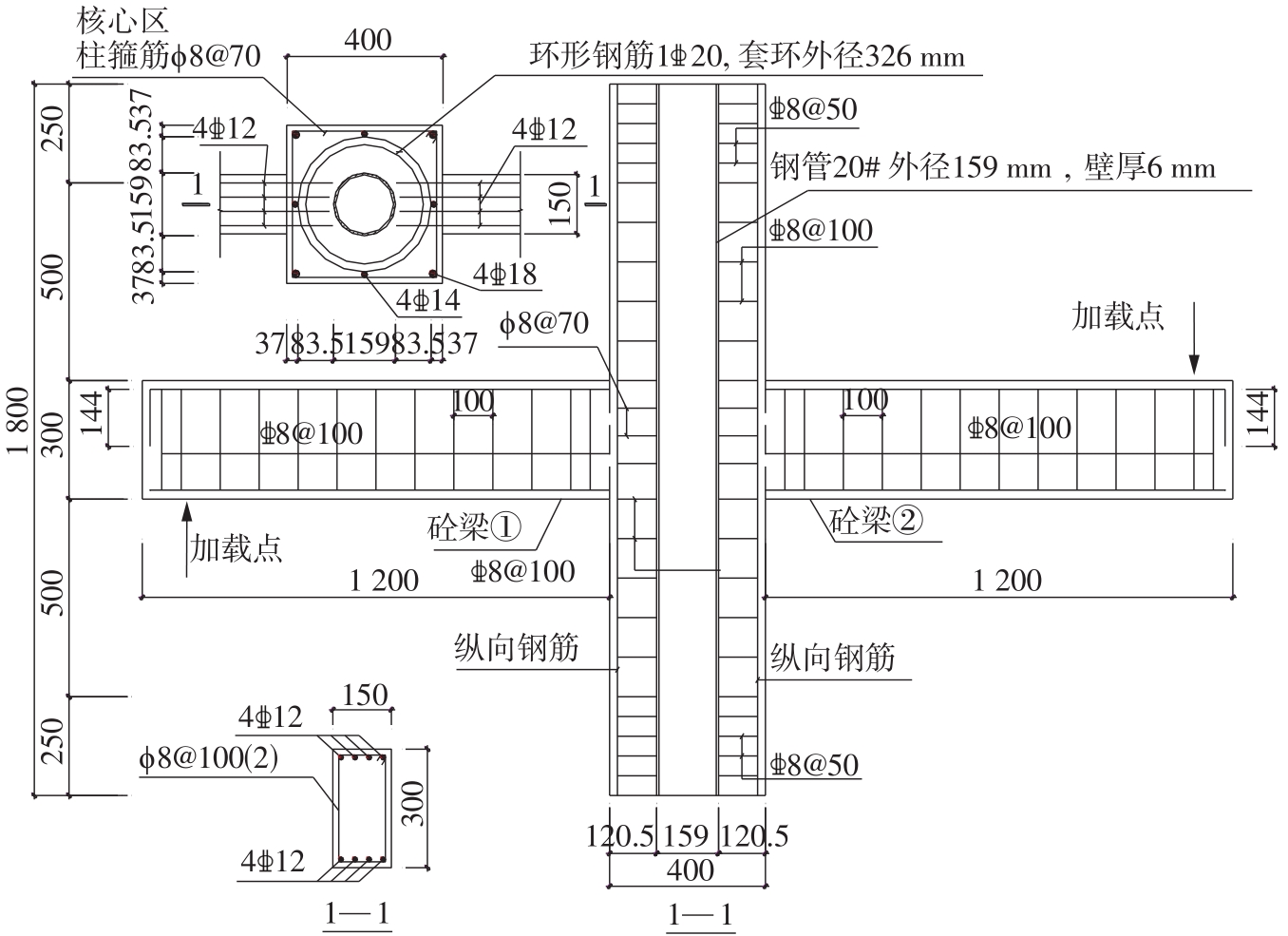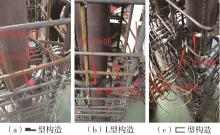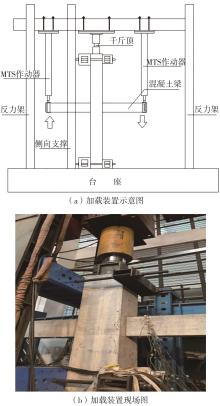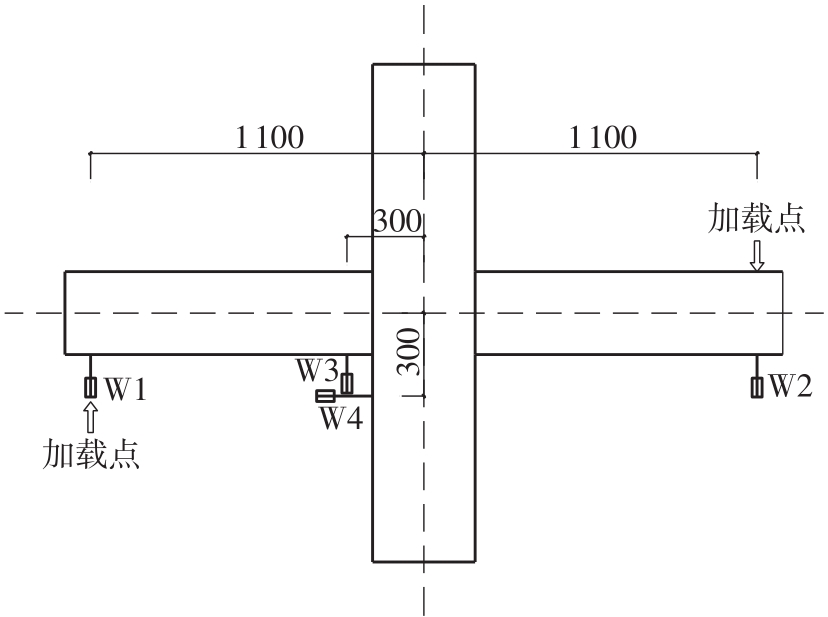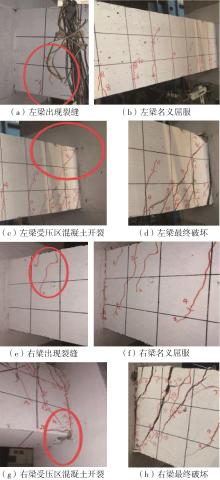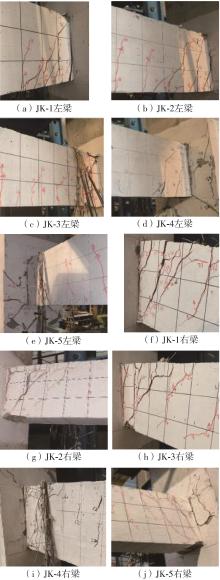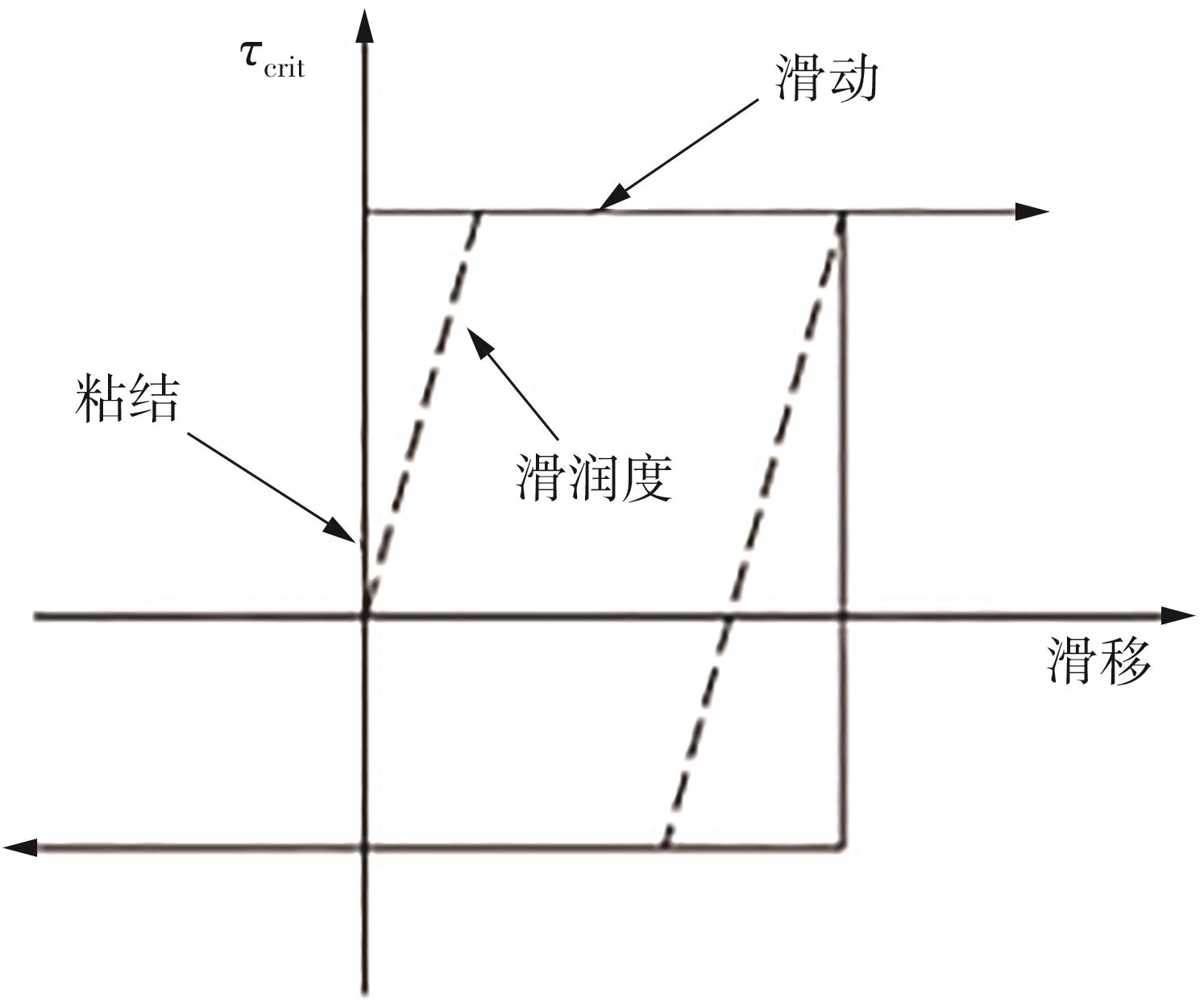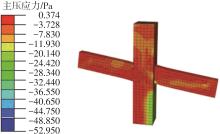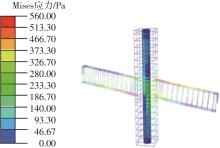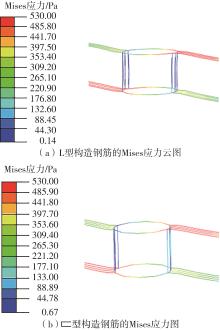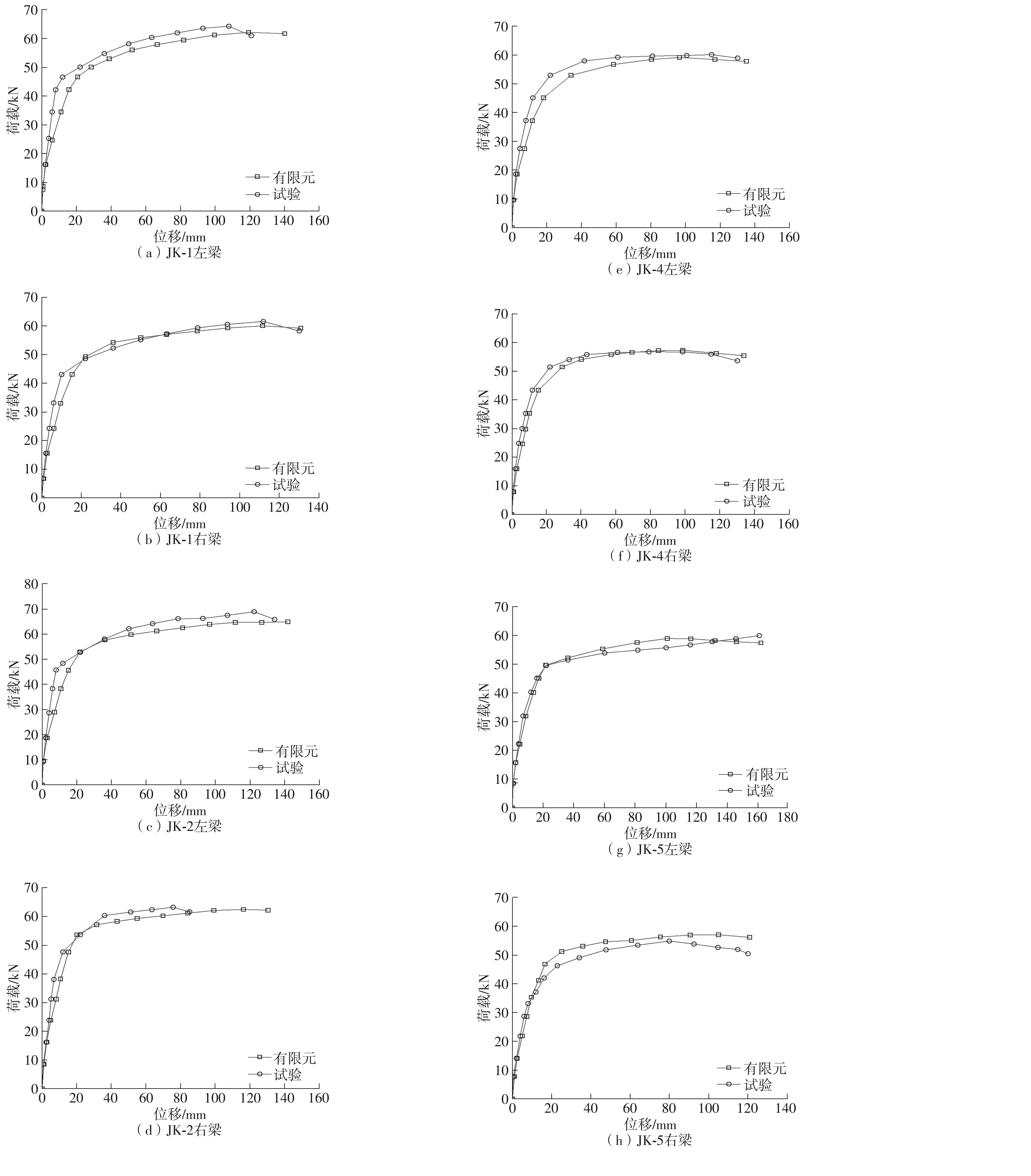华南理工大学学报(自然科学版) ›› 2022, Vol. 50 ›› Issue (11): 82-94.doi: 10.12141/j.issn.1000-565X.210807
所属专题: 2022年土木建筑工程
新型叠合柱-混凝土梁中节点受力性能研究
凌育洪1,2,3 廖昊鹏2 胥竞航2 周靖1 方小丹1,4
- 1.华南理工大学 亚热带建筑科学国家重点实验室,广东 广州 510640
2.华南理工大学 土木与交通学院,广东 广州 510640
3.中新国际联合研究院,广东 广州 510640
4.华南理工大学建筑设计研究院有限公司,广东 广州 510640
Study on Mechanical Behavior of New Type Middle Joint of CFST Composite Column-Concrete Beam
LING Yuhong1,2,3 LIAO Haopeng2 XU Jinghang2 ZHOU Jing1 FANG Xiaodan1,4
- 1.State Key Laboratory of Subtropical Building Science,South China University of Technology,Guangzhou 510640,Guangdong,China
2.School of Civil Engineering and Transportation,South China University of Technology,Guangzhou 510640,Guangdong,China
3.Sino-Singapore International Joint Research Institute,Guangzhou 510640,Guangdong,China
4.Architecture Design Research Institute,South China University of Technology,Guangzhou 510640,Guangdong,China
摘要:
针对现行设计规程中钢管混凝土叠合柱-混凝土梁连接方法中的不足,提出一种柱内设置钢管外环形钢筋的新型梁柱节点。梁端纵筋以卡扣( 型)、弯折(L型以及
型)、弯折(L型以及 型)的形式连接柱中环筋,利用柱中环筋平衡混凝土框架梁端纵筋传来拉力。制作5个钢管混凝土叠合柱-混凝土梁中间节点试件,进行梁端单调静力加载试验,研究节点试件的裂缝发展及分布、破坏形态、承载力、延性与钢筋应变发展规律;利用ABAQUS软件进行仿真模拟分析。结果表明:不同节点构造形式的试件最终破坏形态相同,均为梁根部弯曲破坏,试件均具有良好的延性和变形能力;梁受拉纵筋均能在试件达到屈服前屈服;试验过程中未出现梁纵筋和柱中环筋发生滑移脱落的现象。仿真模拟分析结果与试验结果基本吻合。
型)的形式连接柱中环筋,利用柱中环筋平衡混凝土框架梁端纵筋传来拉力。制作5个钢管混凝土叠合柱-混凝土梁中间节点试件,进行梁端单调静力加载试验,研究节点试件的裂缝发展及分布、破坏形态、承载力、延性与钢筋应变发展规律;利用ABAQUS软件进行仿真模拟分析。结果表明:不同节点构造形式的试件最终破坏形态相同,均为梁根部弯曲破坏,试件均具有良好的延性和变形能力;梁受拉纵筋均能在试件达到屈服前屈服;试验过程中未出现梁纵筋和柱中环筋发生滑移脱落的现象。仿真模拟分析结果与试验结果基本吻合。
中图分类号:


 型
型 型
型 型
型 型
型
